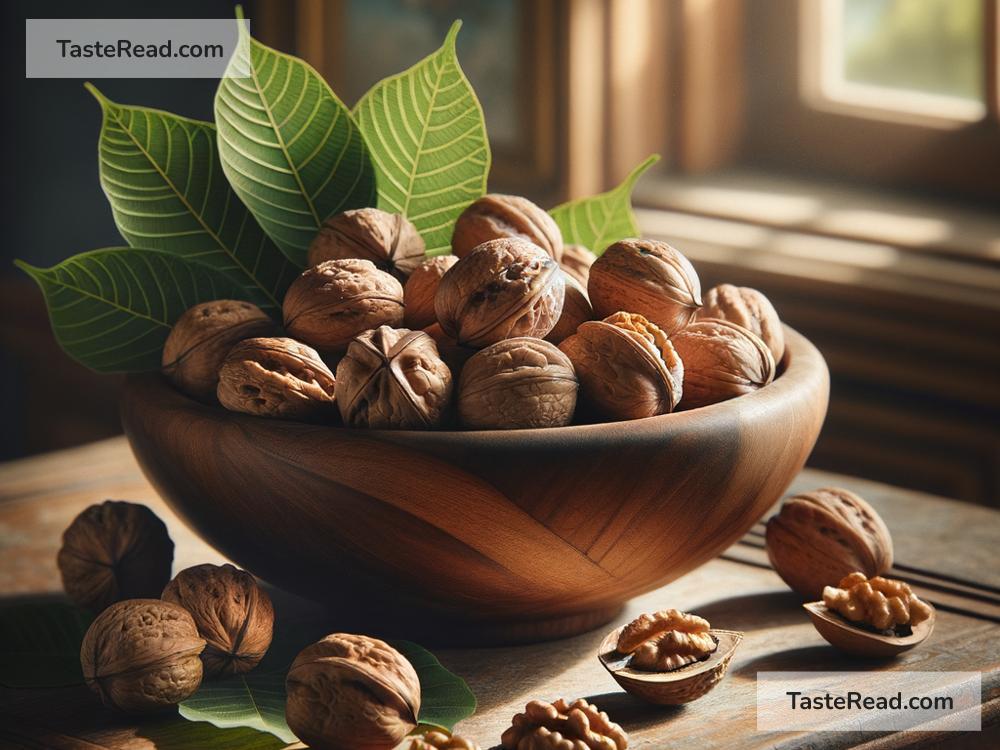How Walnuts Became Symbols of Protection
Throughout history, everyday foods and objects have often been given deeper meanings by cultures around the world. Among them, walnuts hold a special place not just as a nutritious treat but as symbols of protection and safety. You may wonder, how did walnuts come to represent protection? It’s a fascinating journey through history, folklore, and symbolism.
The Walnut: A Nut with a Tough Shell
At first glance, walnuts seem like an ordinary food item. But if you think about their shape and structure, they are quite extraordinary. Walnuts are protected by a tough, hard shell that shields the delicate nut inside. This natural design has made it a metaphor for protection over time. Much like the shell keeps the nut safe, walnuts began to symbolize safety and shelter in human traditions.
Additionally, when you crack open a walnut, the interior looks somewhat like a brain. This resemblance led many ancient cultures to associate walnuts with wisdom, intelligence, and mental protection. As a result, walnuts took on layers of meaning that went far beyond just being a snack or an ingredient in recipes.
Ancient Symbolism: Protection from Evil
Walnuts have appeared in various myths and folklore as protective symbols. For example, in ancient Europe, people believed walnuts could ward off evil spirits. Some cultures would place walnuts at windows and doorways to keep bad energy or harmful forces out of their homes.
The tough shell of the walnut was viewed as a barrier against negativity—almost like a shield. This belief tied walnuts to the idea of spiritual protection. People would even carry walnuts in their pockets or bags to keep themselves safe during travels. It was thought that they had the power to protect against harm and misfortune.
Walnuts in Rituals and Festivals
Walnuts also played a part in rituals and festive traditions. In certain seasonal festivals, walnuts were thrown into fires or buried in fields as offerings to spirits or gods. This practice was done to ensure the safety of the land or the people who lived on it. Farmers believed that offering walnuts to the earth would protect their crops from disease and pests, bringing them abundance in return.
In some wedding traditions, walnuts were given as gifts to newlyweds. This was thought to symbolize protection for their marriage and a strong, secure bond between the couple. The nut’s shell represented resilience and endurance, qualities every successful relationship needs.
Walnuts in Medicine and Wellness
Over time, walnuts also became associated with physical protection, thanks to their health benefits. Ancient healers recognized that walnuts are packed with nutrients. They are rich in healthy fats, antioxidants, vitamins, and minerals, which help safeguard the human body against illness.
Long before modern science confirmed walnuts’ health benefits, people believed eating them could protect the brain and heart—a connection that likely stemmed from their appearance. Their brain-like shape led to the idea that they could preserve mental clarity and protect against cognitive decline. Eating walnuts regularly was seen as a way to shield oneself from sickness and stay strong and healthy.
Walnuts in Modern Symbolism
Even in the modern era, walnuts continue to hold symbolic meaning. They are often seen as small treasures tucked inside their sturdy shells, representing resilience and safety in difficult times. Artists and writers sometimes use walnuts as metaphors for inner strength or as reminders to take time to reflect and protect one’s well-being.
In certain cultures, walnuts are still used in spiritual rituals or are kept nearby as lucky charms. Whether during celebrations or quiet moments, walnuts remind people of the importance of protection—in their homes, relationships, health, and lives.
A Symbol Rooted in Nature
Ultimately, walnuts became symbols of protection because of their natural characteristics. Their hard shells sparked the idea of safety, and their nourishing qualities symbolized health and vitality. People across cultures and centuries found comfort in the simple walnut, turning it into so much more than just a nut. It became a symbol of security, both physical and emotional.
How Can We Embrace This Symbol Today?
While the symbolic meanings of walnuts may have originated in ancient times, they still resonate today. Just as people in the past used walnuts to protect themselves or their loved ones, we can incorporate their symbolism into our lives.
For example, walnuts can remind us to create boundaries and protect our mental and emotional health. If life feels overwhelming, think of the walnut’s shell—it’s a reminder to set up a barrier between yourself and negativity. Physically, nuts like walnuts can help us practice self-care by promoting wellness through a balanced diet.
Additionally, walnuts encourage us to reflect on the importance of strength and resilience. Just as the walnut thrives inside its shell, we too can learn to grow and flourish while safeguarding what’s most valuable to us—our love, health, and happiness.
Conclusion
The humble walnut is much more than just a delicious nut. Its tough shell and brain-like shape contributed to its reputation as a symbol of protection throughout history. From ancient rituals to wellness practices, walnuts have provided people with not only nourishment but also comfort, safety, and meaning.
So, the next time you snack on walnuts or use them in your cooking, pause for a moment to appreciate their deeper symbolism. They remind us to protect what matters most and embrace resilience, strength, and good health—values that continue to be timeless.

